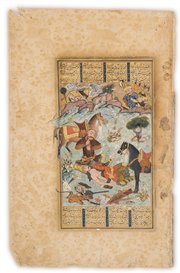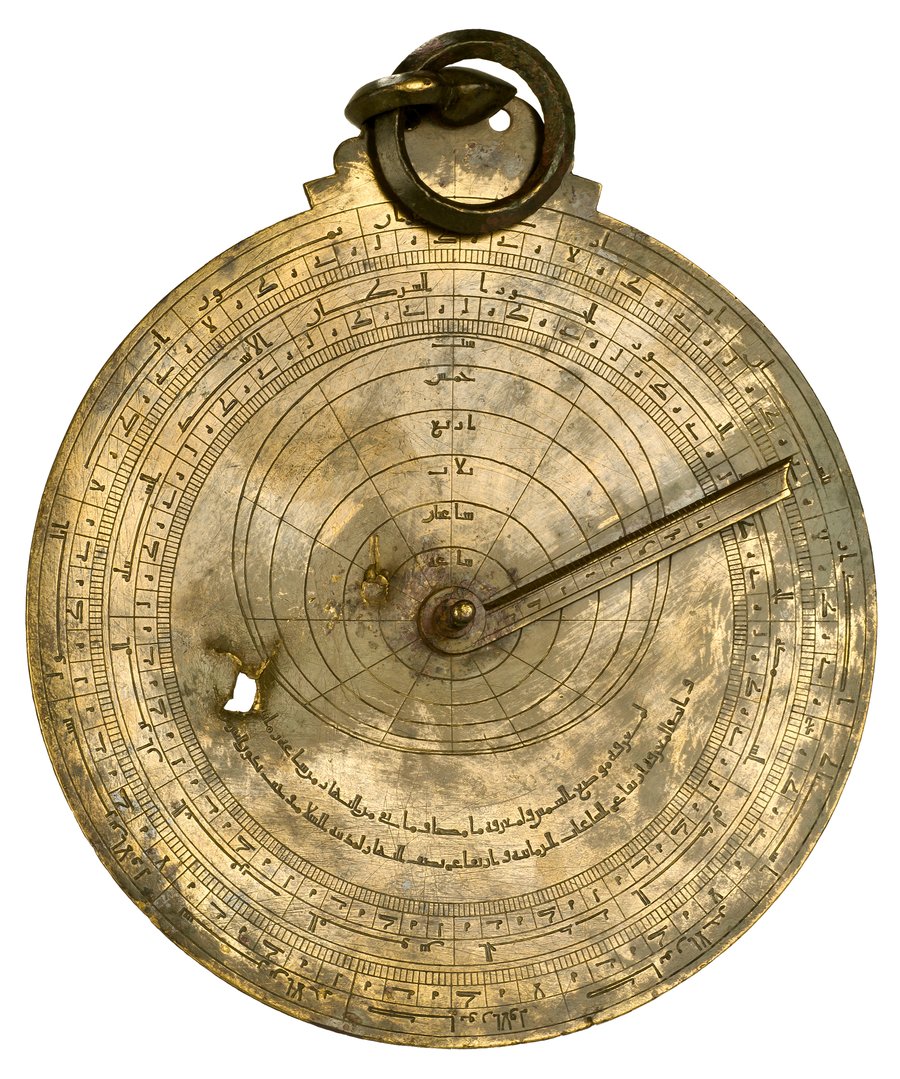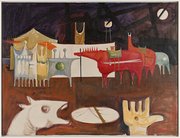
Abbasid Planispheric Astrolabe
Museum of Islamic Art
- Title:
- Abbasid Planispheric Astrolabe
- Artist:
- Nastulus
- Production place:
- Baghdad
- Date:
- 875 - 925
- Period:
- Abbasid
- Title:
- Abbasid Planispheric Astrolabe
- Artist:
- Nastulus
- Production place:
- Baghdad
- Date:
- 875 - 925
- Period:
- Abbasid
- Material:
- Brass, Black compound
- Technique:
- Casting, Engraving, Inlaying, Riveting, Piercing
- Dimensions:
- 26.7 × 19.4 × 4 cm
- Diameter:
- 19.2 cm
An astrolabe is an early scientific instrument representing a two-dimensional model of the celestial sphere. These instruments trace back to the Hellenistic period between 220 and 150 BCE but became popular as complex tools in Europe and the Islamic world from the early Middle Ages.
Constructed as inscribed discs, usually made of metal, such as brass or iron, astrolabes were used for measuring time (the time of the day and night, the month or the year), determining altitude and latitude or for observational purposes. They were, therefore, extremely useful in solving problems in the fields of geography, surveying and astronomy. This type of astrolabe, known as a ‘planispheric astrolabe’, allowed astronomers to calculate the position of the sun and other prominent stars.
This brass planispheric astrolabe was signed by Nastulus, also known as Bastulus, one of the leading astronomer-craftsmen during the Abbasid time. It was made in Iraq (probably in Baghdad) in the late 3rd century AH/ late 9th to early 10th century CE.



